
Urban renewal was played out in the early 60s in the area near Roosevelt and Halstead. One by one, buildings were beat down by the giant, swinging metal ball of progress.
Progress for those who wanted to build a city campus of the University of Illinois near downtown. It was not progress for the many who were uprooted and forced to scatter to other areas, causing a chain reaction of outward movement towards the outer city and the suburbs.
This neighborhood was one of the few integrated neighborhoods in a very segregated and racist Chicago of 1963. The Blacks had few options as they were permitted to live in only a few locations in Chicago at this time. The Mexicans headed south into the Pilsen community, a community that had been a port of entry for European immigrants. Now it was about to see the face of change and it had a dark color to it.
Our presence in Pilsen started the process of White Flight down the Archer Avenue corridor and into the White suburbs.

Looking west in 1910 from Halstead on what became Rooselvelt Road. I lived here as a child 50 years after this photo was taken.
There were Mexicans in Pilsen before the destruction of the area where UIC now occupies. But the destruction sent many more, all at the same time, to a neighborhood where they were not welcomed by many of the current Eastern European-Americans and Eastern European immigrants.
Yet, in time, the Mexican and Polish kids were for the most part civil and friendly with each other while maintaining strong cultural pride. Racism between the groups, at least to my experience, remained behind closed doors. We would tease each other but it was not from hatred.
We moved to Pilsen in 1963. We being seven children and a single mother, whose husband stretched his wandering wings and flew to Mexico for the winter only to find a new nest with a newer, younger song.

Pic of the urban renewal of my birth neighborhood. Most of the homes are demolished. Hull House was still remaining. It was one of the last structures to be demolished. This was one of the few integrated neighborhoods in Chicago in the early 60's.There were Italians, Mexicans, and African-Americans in this neighborhood sacrificed for the Circle Campus.
We were one of the last families to move. The building where the ice supplier operated was now flattened rubble. Goodrich School was reduced to memories to be forgotten in a generation. Open lots and a few winos were all that remained. We lived half block off Roosevelt on Peoria. There is a parking lot now where we used to live.
I watched most of the buildings destroyed. A little six year-old child standing front row in the arena of urban renewal watching the huge metal machines hurl metal balls against walls; bricks exploding,dust swirling, walls falling. It was quite a sight for a 6 year-old.
I remember the area well.
Maxwell Street was a few blocks away. I was intrigued by the energy. I was captivated by the crowds. I remember the old Black men playing electric guitar. Blues is still my favorite music to this day. Chicago Blues.
The vibrancy of the African-American Bluesmen of the open-markets across the road that decadently danced non-stop are now quiet monotone hums of gentrified blandness. Instead of guitar players jamming, grown men now play slow-pitch, underhand softball on baseball diamonds south of the old Maxwell Street.
When I grew up in Pilsen we never played softball with a mitt. We used the 16 inch hard clincher. We used mitts to play hard-ball.

Slow pitch, under hand softball?
Wearing gloves?
Que?
Things do change. Just like the Polish shook their heads at the differences of the cultural habits of the Mexicans, I shake my head at the new softball playing culture of the area.

real man in 1908 playing softball without a mitt.
-------------------------------------------------------------------------------------
There was an embedded toughness in Chicagoans when I grew up. One had to be tough to endure the bitter winters, the corrupt politicians, and the local cops who would stop you in the hopes of getting lunch money. That was life in the 60s.
August of 1963 was when we arrived in the Eastern European neighborhood of Pilsen. My mother rented a third floor apartment on Cermak and Paulina. I would live in that general area for the next 16 years.
There were no Black faces anymore. The Brown faces were fewer as well. Even the Italians were missing.
The first school I attended in Pilsen was St. Vitus. My experience at that school was rough with many racist encounters. The kids I can dismiss since they learned their racism at home; it was the nuns, supposed women of God, that I have trouble reconciling. Maybe the racist nuns were products of their time when racism was not something to shed as a personal and ugly fault.

(1917) Mexican immigrants cutting weeds outside Chicago. Daily News Archive.

1958 pic of 3rd graders in Peter Cooper. There is one African-American child and there is already an Hispanic presence in the school. In about ten years there would be a majority of Mexican children in any school picture at Cooper. From my conversations with some who lived in Pilsen during the time this picture was taken, there was already a fear that the neighborhood was changing and some families were moving away. In less than ten years, the White Flight to the newer nests was almost complete.


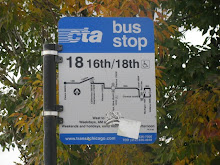
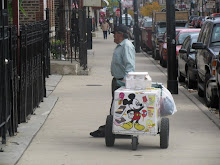



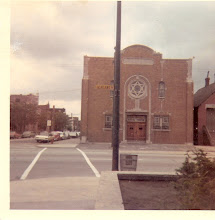
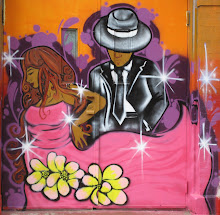

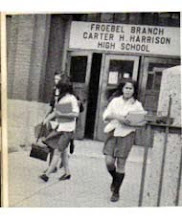


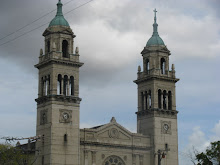
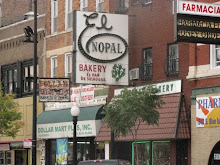
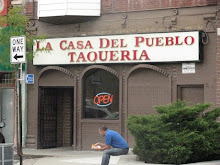

No comments:
Post a Comment